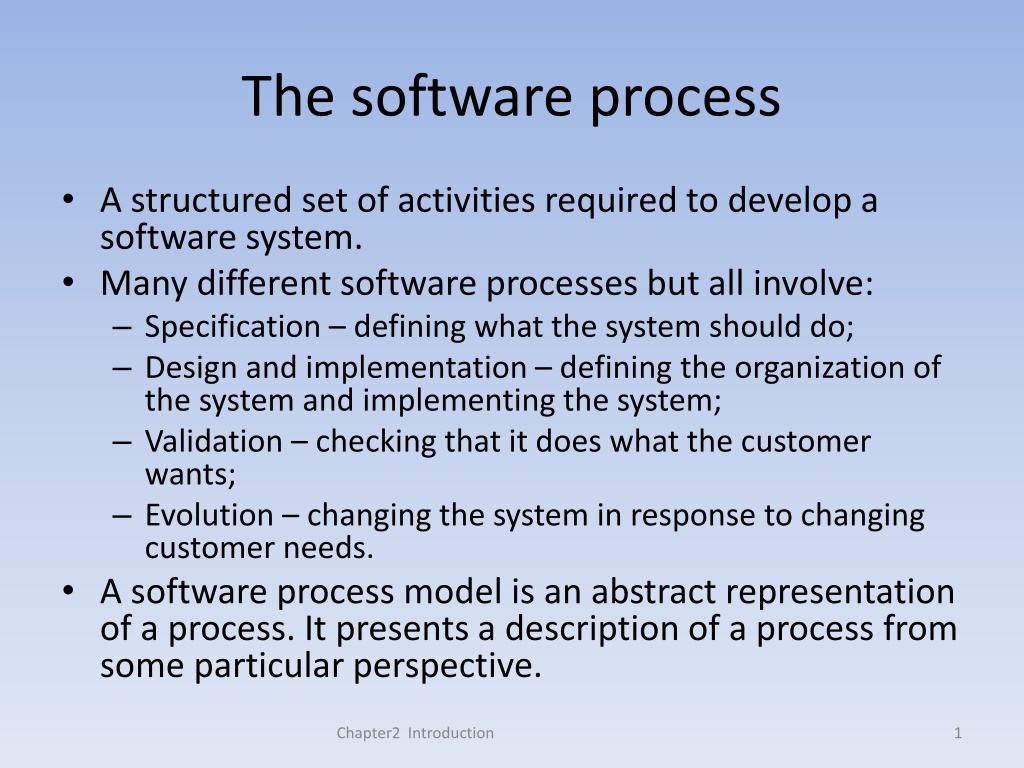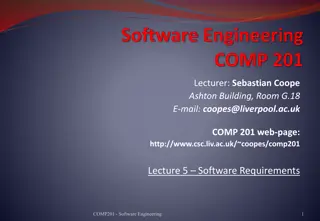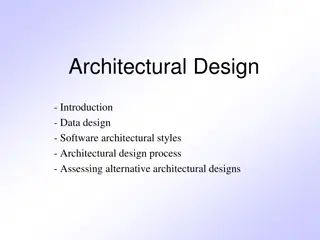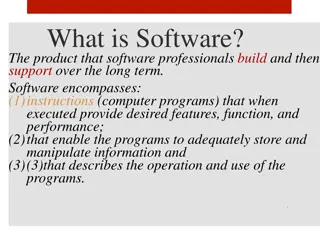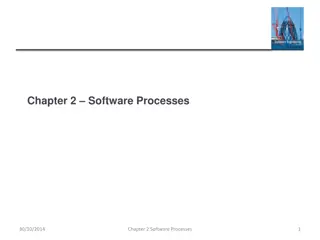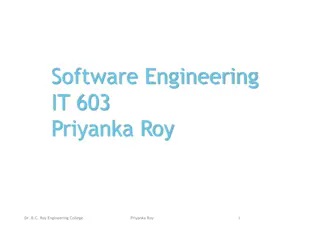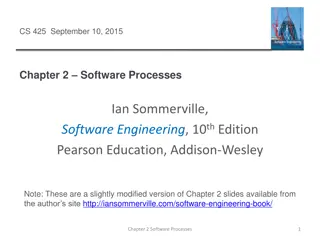Understanding Software Process Models
Software process models encompass various activities like specification, design, validation, and evolution involved in developing a software system. This includes plan-driven and agile processes, as well as models like the waterfall model and reuse-oriented software engineering. Embracing elements from different models leads to the development of most large systems. Each model has its distinct phases and characteristics, catering to specific project requirements.
Uploaded on Oct 10, 2024 | 0 Views
Download Presentation

Please find below an Image/Link to download the presentation.
The content on the website is provided AS IS for your information and personal use only. It may not be sold, licensed, or shared on other websites without obtaining consent from the author. Download presentation by click this link. If you encounter any issues during the download, it is possible that the publisher has removed the file from their server.
E N D
Presentation Transcript
The software process A structured set of activities required to develop a software system. Many different software processes but all involve: Specification defining what the system should do; Design and implementation defining the organization of the system and implementing the system; Validation checking that it does what the customer wants; Evolution changing the system in response to changing customer needs. A software process model is an abstract representation of a process. It presents a description of a process from some particular perspective. Chapter2 Introduction 1
Software process descriptions When we describe and discuss processes, we usually talk about the activities in these processes such as specifying a data model, designing a user interface, etc. and the ordering of these activities. Process descriptions may also include: Products, which are the outcomes of a process activity; Roles, which reflect the responsibilities of the people involved in the process; Pre- and post-conditions, which are statements that are true before and after a process activity has been enacted or a product produced. Chapter2 Introduction 2
Plan-driven and agile processes Plan-driven processes are processes where all of the process activities are planned in advance and progress is measured against this plan. In agile processes, planning is incremental and it is easier to change the process to reflect changing customer requirements. In practice, most practical processes include elements of both plan-driven and agile approaches. There are no right or wrong software processes. Chapter2 Introduction 3
Software process models The waterfall model Plan-driven model. Separate and distinct phases of specification and development. Incremental development Specification, development and validation are interleaved. May be plan-driven or agile. Reuse-oriented software engineering The system is assembled from existing components. May be plan-driven or agile. In practice, most large systems are developed using a process that incorporates elements from all of these models. Chapter2 Introduction 4
The waterfall model Chapter2 Introduction 5
Waterfall model phases There are separate identified phases in the waterfall model: Requirements analysis and definition System and software design Implementation and unit testing Integration and system testing Operation and maintenance The main drawback of the waterfall model is the difficulty of accommodating change after the process is underway. In principle, a phase has to be complete before moving onto the next phase. Chapter2 Introduction 6
Waterfall model problems Inflexible partitioning of the project into distinct stages makes it difficult to respond to changing customer requirements. Therefore, this model is only appropriate when the requirements are well-understood and changes will be fairly limited during the design process. Few business systems have stable requirements. The waterfall model is mostly used for large systems engineering projects where a system is developed at several sites. In those circumstances, the plan-driven nature of the waterfall model helps coordinate the work. Chapter2 Introduction 7
